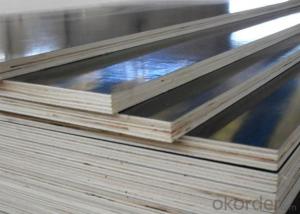When it comes to choosing materials for home improvement projects, homeowners often find themselves torn between MDF board and plywood. Both are popular choices for a variety of applications, from furniture making to cabinetry and more. But which one should you choose for your next project? Let’s dive into the details and see if we can help you make the right decision.
The Basics: What is MDF and Plywood?
MDF, or Medium Density Fiberboard, is an engineered wood product made from wood fibers and resin, which are combined under heat and pressure. It’s known for its smooth surface, making it ideal for painting and lamination. On the other hand, plywood is a natural wood product that consists of thin layers of wood veneer, or plies, glued together. Each layer is positioned with its grain at right angles to the adjacent layers, giving plywood its strength and versatility.
Aesthetic Appeal: MDF vs. Plywood
If you’re looking for a material that’s ready for a makeover, MDF is your go-to. Its smooth surface is perfect for painting, staining, or laminating. You can easily create a sleek, custom look that suits your home’s style. Plywood, with its layered structure, has a more natural and rustic appearance. While it can be sanded and finished, it’s not as smooth as MDF, which might be a downside if you’re aiming for a polished look.
Durability: Which Lasts Longer?
Plywood is often considered the more durable option. Its layered construction makes it resistant to warping and provides strength in various directions. MDF, while strong, is more susceptible to damage from moisture, which can lead to swelling and delamination. If you’re working in a high-humidity area or need a material that can stand up to wear and tear, plywood might be the better choice.
Cost Considerations: Budget-Friendly Options
When it comes to cost, MDF is generally cheaper than plywood. This can be a significant factor for homeowners on a tight budget. However, it’s essential to consider the long-term costs. While MDF might be more affordable initially, its lower durability could mean more frequent replacements, which could end up costing you more in the long run.
Ease of Use: Working with MDF and Plywood
MDF is lighter and easier to cut and shape, making it a favorite among DIY enthusiasts. Its uniform density ensures that it cuts cleanly without splintering. Plywood, while also relatively easy to work with, can be heavier and more challenging to handle, especially for larger projects. If you’re looking for a material that’s easy to manipulate, MDF could be the winner.
Environmental Impact: Green Choices
For those with an eco-conscious mindset, the environmental impact of the materials you choose is crucial. Plywood, being a natural wood product, often has a lower environmental footprint compared to MDF, which is made from wood fibers and requires more energy for production. However, it’s worth noting that some MDF manufacturers are adopting more sustainable practices, so it’s essential to research the specific product you’re considering.
Specialized Uses: When to Choose Each Material
Sometimes, the choice between MDF and plywood comes down to the specific use case. For instance, if you’re building a bookshelf that needs to support heavy loads, plywood’s strength might be the better option. Conversely, if you’re creating a decorative wall panel, MDF’s smooth surface could be more suitable. Consider the unique requirements of your project when making your decision.
Making the Decision: MDF or Plywood?
Ultimately, the choice between MDF and plywood will depend on your project’s specific needs, your budget, and your personal preferences. If you’re looking for a cost-effective, easy-to-work-with material for a project that doesn’t require high durability, MDF could be the way to go. But if you need a strong, long-lasting material that can handle moisture and heavy loads, plywood might be the better choice.
Remember, there’s no one-size-fits-all answer, and sometimes, a combination of both materials can yield the best results. Don’t be afraid to get creative and explore the possibilities that each material offers. After all, your home is an extension of your personality, and the materials you choose should reflect that.
Whether you’re a seasoned DIYer or a first-time homeowner, making the right choice between MDF and plywood can make a world of difference in the success and satisfaction of your home improvement projects. Take the time to consider the factors mentioned above, and you’ll be well on your way to creating a space that not only looks great but also stands the test of time.

